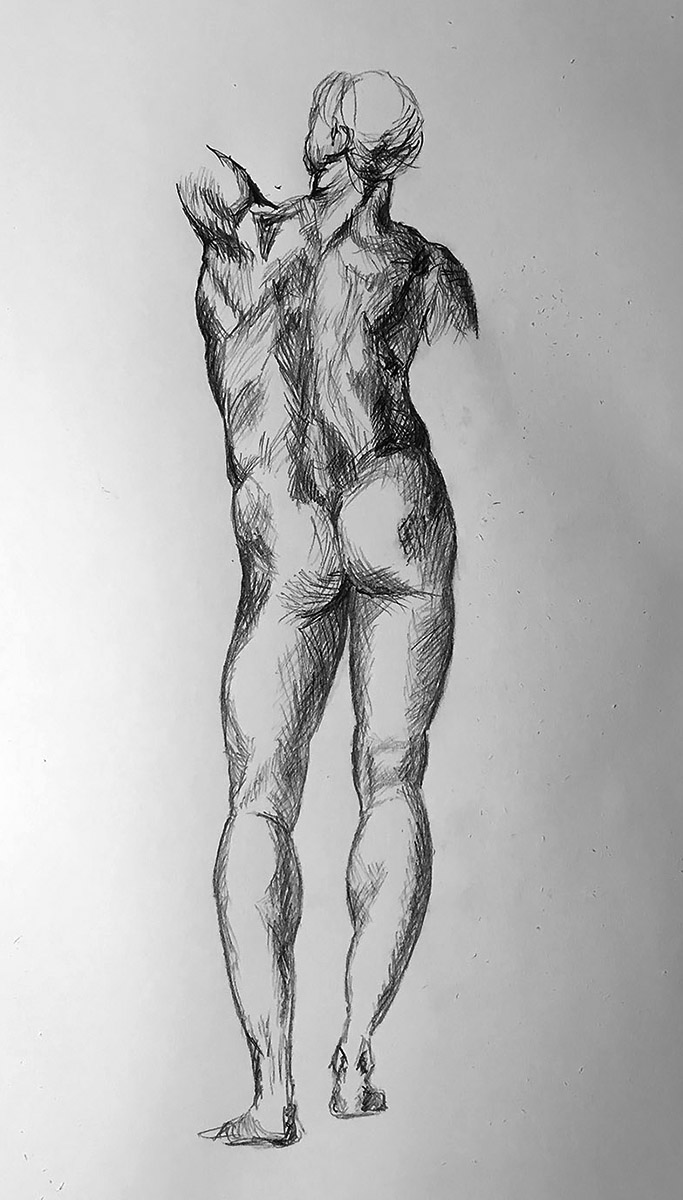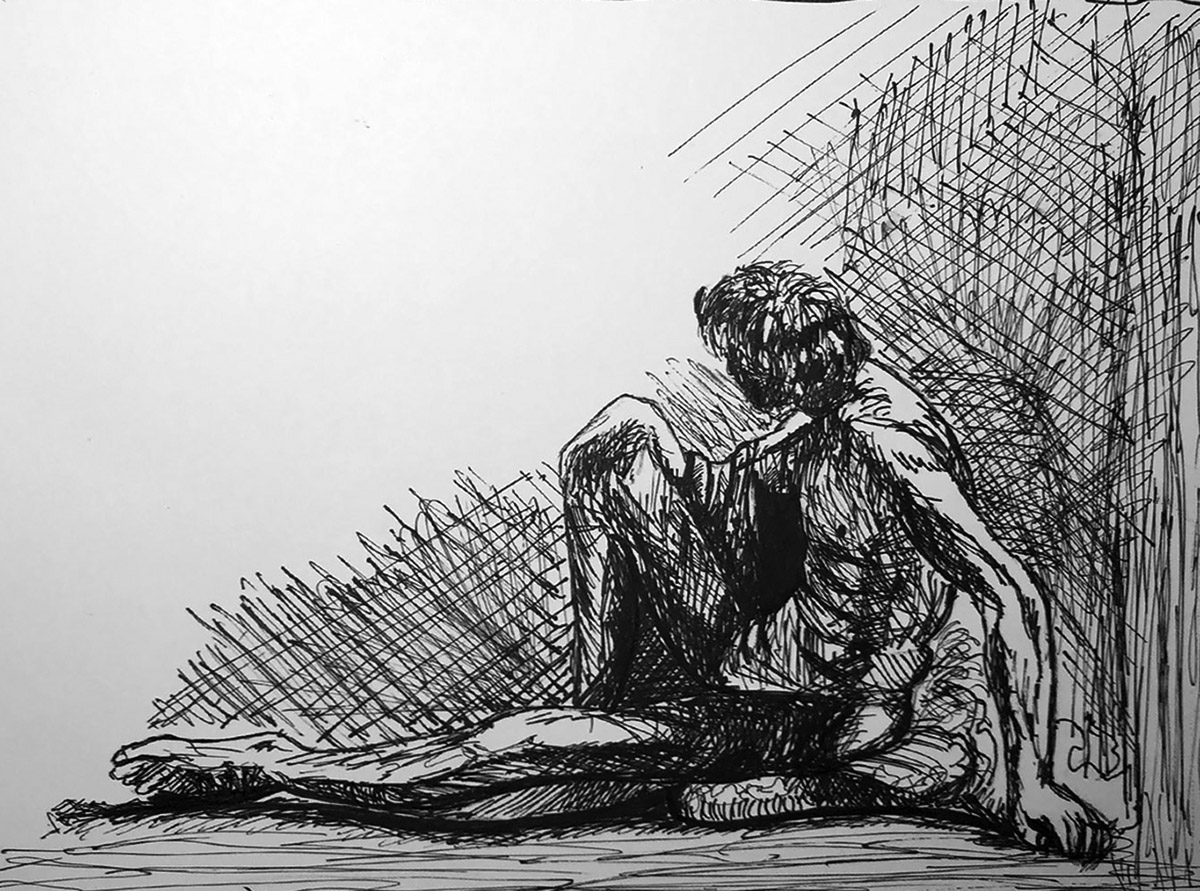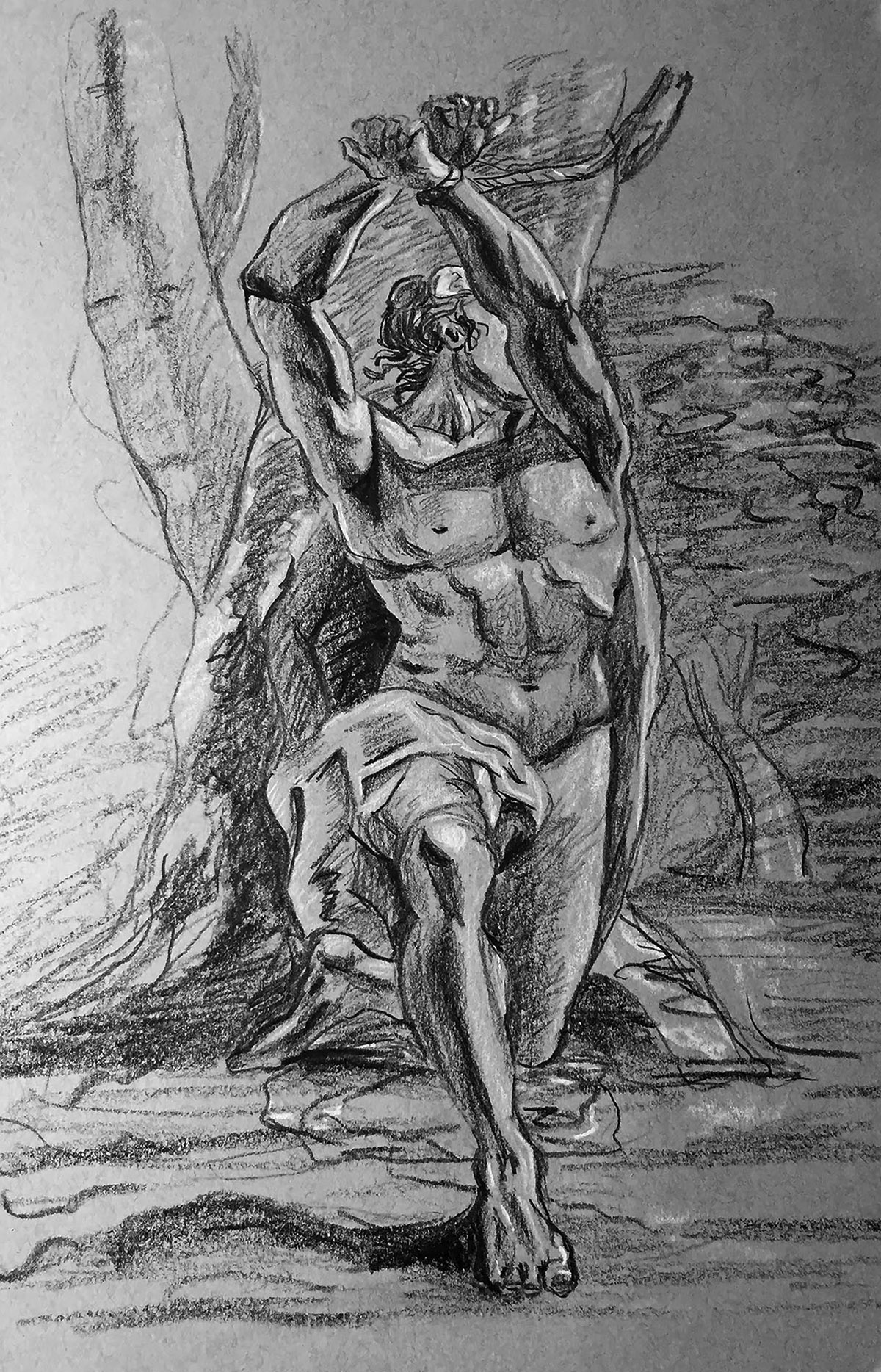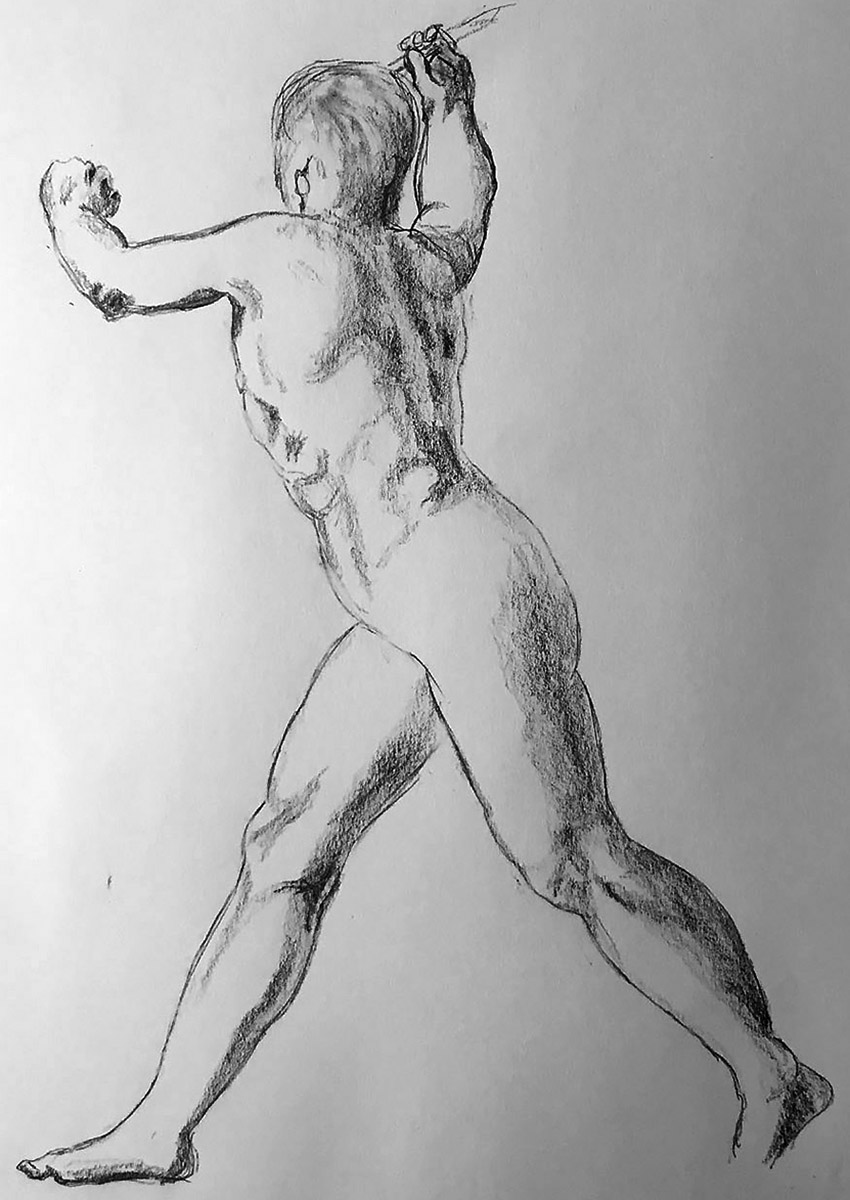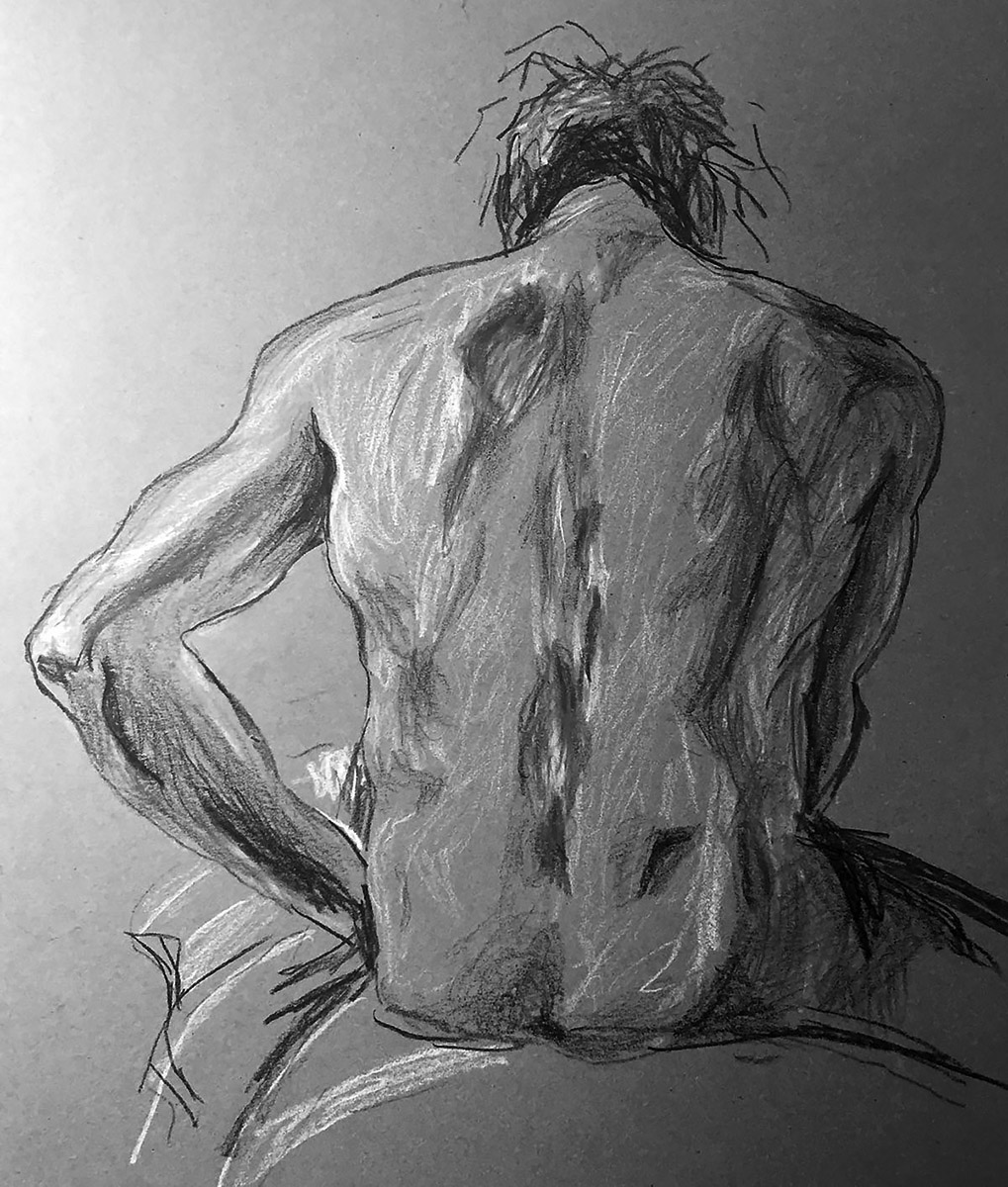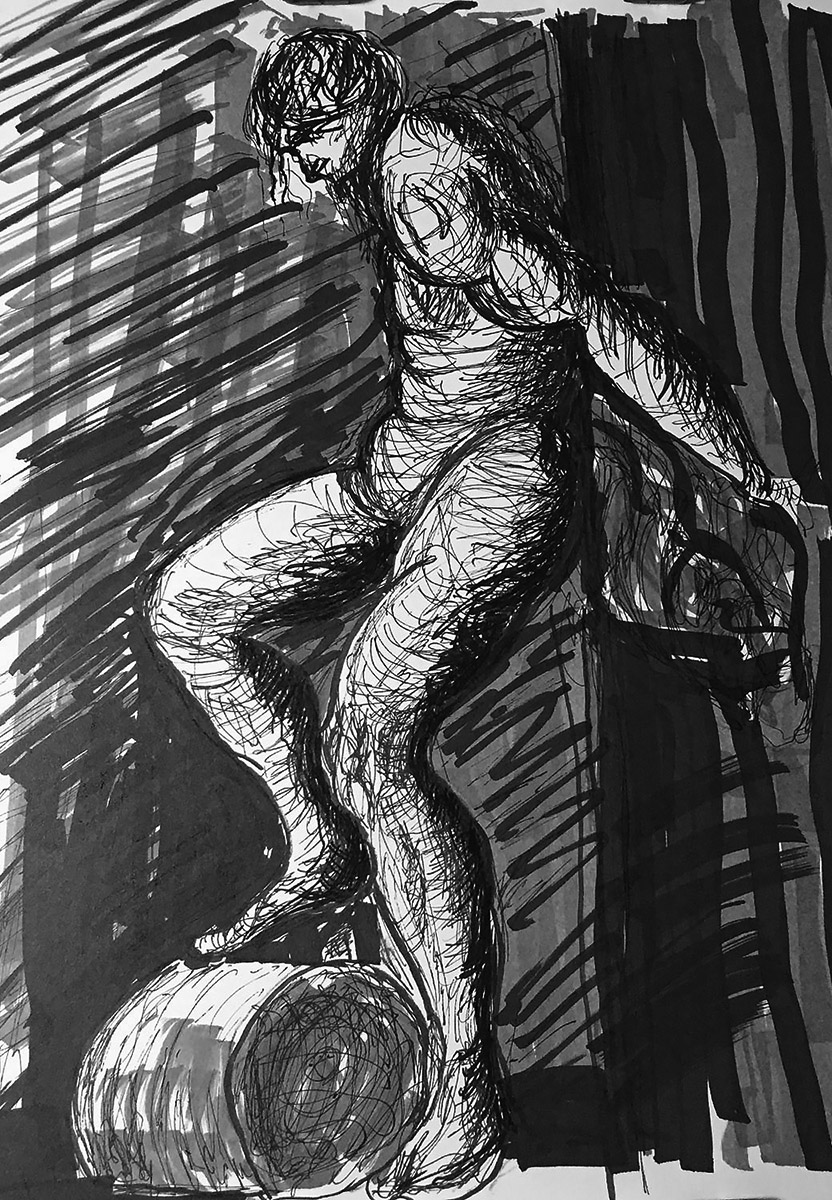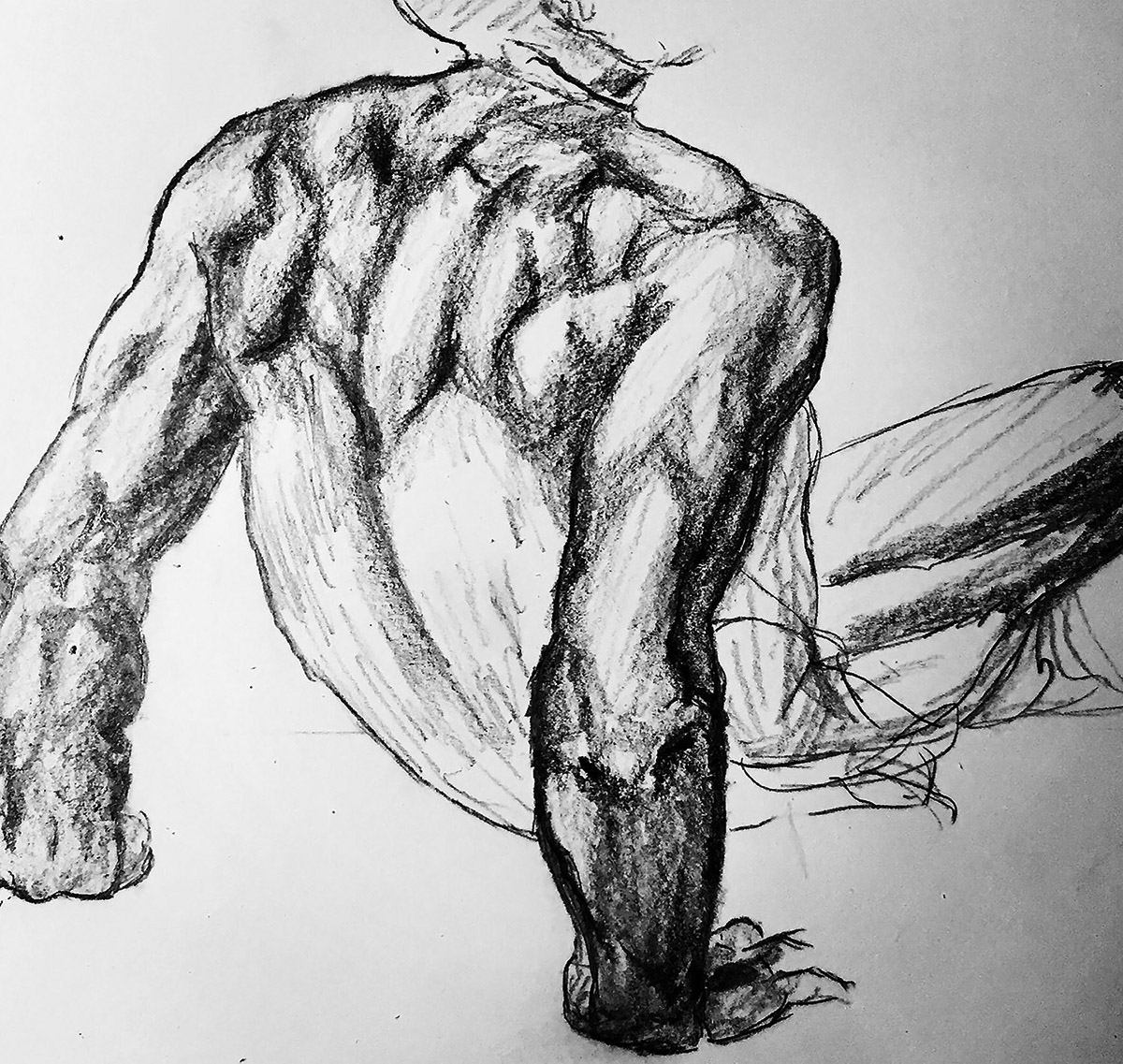
Graphite pencil figure drawing copied from Michelangelo Buonarroti. According to the book of drawings I’m working from the description is “Study for one of the resurrected of the last judgement”. It also says it is in ‘British Museum’. Once again I’m going to assume it is The British Museum and not one of the garden variety British museums. The British Museum labels the drawing “A FIGURE RISING FROM THE GRAVE, IN THE FOREGROUND OF THE LAST JUDGEMENT.” Yes, they wrote it out in all caps. If you’re THE BRITISH MUSEUM you can do things like that. If you are The Viktor Wynd Museum of Curiosities, Fine Art & Natural History, also in London, then you cannot get away with things like that. The last thing people want is Viktor Wynd appearing to yell at them. Let’s get back to the drawing. Michelangelo did his in black chalk heightened with white. I just did mine in pencil. The scratchiness of chalk bothers me somehow. Like pastels and so forth. So I try to substitute it for something non-scratchy. The term “non-scratchy” was not underlined so I guess it’s a real word. Thanks computer for taking my side for once.
On the back of the drawing is another drawing. Michelangelo was perhaps very frugal in his use of paper and/or environmentally responsible. In hindsight, I think it would have been OK if he would have used two sheets of paper. I mean I don’t think he would be ‘cancelled’ of discredited for using more than one piece of paper. I mean I’m all for getting the most out of your materials but really, I mean it’s Michelangelo.

